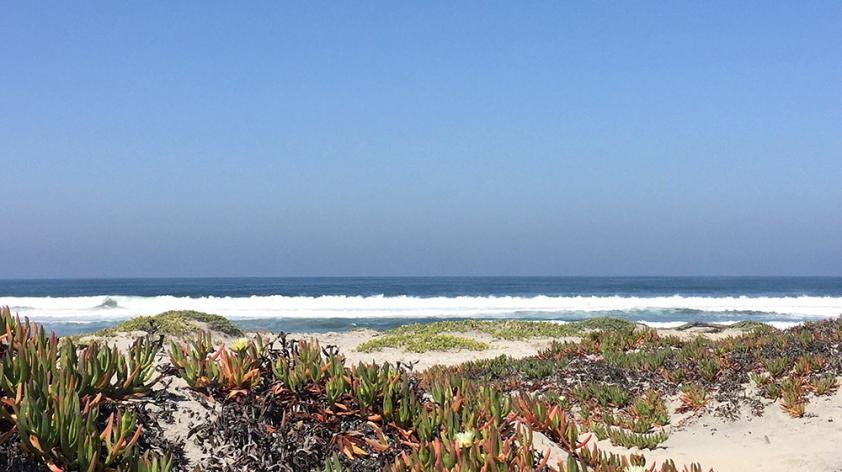
Terns, Plovers, and People: Living in Harmony
This beach on Naval Base Coronado is one site where field biologists are studying California least tern and snowy plover populations. (U.S. Navy photo by S. McLaughlin, SDZG)
As field biologists, we are lucky to have some of the most beautiful offices in the world. Every day, my coworkers and I get to enjoy long walks on the beach, warm sunshine and the occasional passing dolphin pod. Of course with views like the one in the photo, we are working alongside many other people enjoying a day at the Pacific Ocean. It’s wonderful to see people appreciating the beach habitat we all love so much, especially when it's done in a respectful and responsible way. So, here are a couple of thoughts from a field biologist. Both the California least tern and western snowy plover are sensitive to human disturbance. While some bird species will remain on their nest until you are very nearly upon it, terns and plovers seem to hop off at the first sign of danger. Plovers can be seen in the vicinity of the nest, performing the broken-wing display to draw perceived predators away from their nest. Terns take a more aggressive approach, screeching at and dive-bombing anyone that approaches their nest; sometimes several members of the colony will join in to drive the threat away. With the numbers of terns and plovers at critically low levels, it’s important that the birds are able to spend their energy caring for their young, instead of chasing off disturbances.
With chicks this cute and helpless, it's easy to see why we want to protect California least tern populations. (U.S. Navy photo by S. McLaughlin, SDZG)
The most common instances of disturbance we see out in the field are people walking through the colony and dogs being allowed off leash in areas with nesting birds. In addition to upsetting the adult birds, these types of disturbances can result in trampled eggs and chicks, and stressed-out young. Luckily for all the recreational beach users out there, avoiding creating a disturbance is very easy! The most important step to take is observing and abiding by posted signs. If you are ever approached by a game warden or field biologist, don’t be afraid to ask questions. We love to talk about the terns and plovers, and outreach is an important part of our jobs! The beaches of southern California and the birds that live there offer amazing opportunities for people to engage with nature. If we enjoy these resources respectfully and responsibly they will hopefully be here for many more years to come.
Stephanie McLaughlin is a research associate at the San Diego Zoo Institute for Conservation Research.













